This article is written for the most part to celebrate Pit Bull Terriers. They are very sadly, often misunderstood and misrepresented and the truth of the matter is that Pit Bulls are in fact remarkable dogs with positive traits for days. Being loyal and affectionate dogs, this breed has faced many challenges due to misconceptions surrounding their breed. So, this blog aims to shed light on the true nature of Pit Bull Terriers. To highlight their many positive traits in an effort to dispel the bad rap and share what makes them incredible companions and family pets.

However … yes, this is a bit like the proverbial “but” … there are concerns around this beautiful breed, we would be doing you a disservice if we didn’t share information about challenges that have been faced with the Pit Bull breed. For this reason, we have included a FAQ section at the end of this article. It is an extensive FAQ section and we encourage you to read everything written there too. There have been formidable challenges and it is important you are fully informed.
First, we start with the positives…
Loyal Beyond Measure:
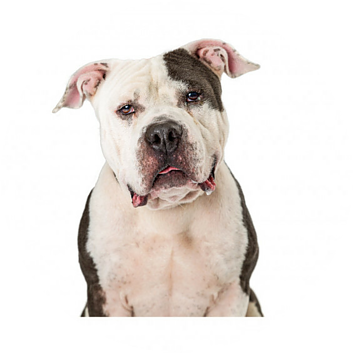
Pit Bull Terriers are well-known for their unwavering loyalty to their humans. Once they bond with their owners, they become deeply devoted and protective. The Pit Bull’s loyalty knows no bounds. This beautiful breed will go to great lengths to ensure the safety and happiness of the humans they love.
In addition to bonding and loving their human families, Pit Bulls also thrive on human companionship. So not only are they loyal and dedicated, they also actually enjoy the company of their families.
Affectionate and Loving:
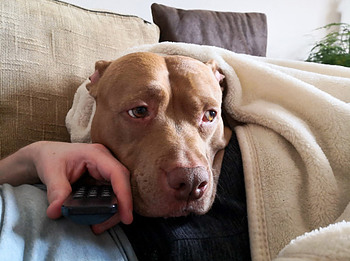
Contrary to popular belief, Pit Bull Terriers are incredibly affectionate dogs. Their natural inclination to show love and seek affection is typical. Also, hilarious pups, Pit Bulls are notorious for their “wiggle butt” antics! Their entire bodies wag with carefree abandon when they see their favorite humans. It may come as a surprise to many to discover that Pit Bulls actually enjoy being close to their loved ones. They often seek cuddles and snuggles. Being affectionate by nature, Pit Bulls are not only excellent companions, they also provide comfort and emotional support to their humans.
Gentle and Patient with Children:

Also contrary to public opinion, Pit Bulls are often gentle and patient with children, which makes them great additions to households with kids. They have a natural affinity for young children, and when properly trained and socialized, they can become loving and protective playmates.
NB: It is super important to supervise all interactions between dogs and children. Please teach both parties how to interact respectfully and safely.
This means there are two very important keys:
- Your Pit Bull must be properly trained and socialized (this is an ongoing commitment you need to make to any breed of dog, in particular a physically strong breed, which the Pit Bull is)
- All interactions between dogs (of any breed) and children must be supervised to ensure that both the dogs are the children are safe. Boisterous play can result in tears when children play with other children and when children play with dogs.
- In as much as all dogs require socialization and training, so too do children. Please ensure that your children (and their visitors) know how to play with your Pit Bull. No jumping on the dog, no pulling or pinching, etc. It may sound obvious to you, but sadly, not everyone is aware that a dog is not for children to ride or “get cute with”. Something that may seem harmless to kids is when they bark back at a dog (any breed) when it is behind a gate or fence. This is teasing, please teach your children not to do it. Not ever.
Intelligence and Trainability:
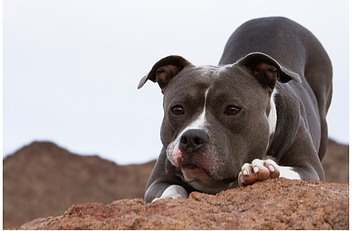
Being very intelligent, Pit Bull Terriers are highly trainable dogs. They have an innate and strong desire to please their humans. As a result, they excel in obedience training, and the best form of training is done with positive reinforcement and consistent guidance. Please do not go along with trainers who use dominance training, rather look for trainers who make use of methods that build positive relationships between you and your Pit Bull.
They also thrive on mental stimulation and enjoy activities that challenge their intellect. Invest in some puzzle toys and interactive games, you’ll have loads of fun watching your pup and this will make for a very happy pup too. The combination of this breeds intelligence and eagerness to learn, making them quick studies, and adaptable to a variety of training exercises.
Playful and Energetic:

You can expect your Pit Bull Terriers to have a zest for life. They are known for their playful and energetic nature. To help your Pit Bull Terrier burn off some of that energy, you can engage them in physical activities and regular exercise. Some suggestions are as follows:
- a game of fetch,
- a long hike,
- or an agility course,
You will find that your Pit Bull will be up for the challenge. Having a playful disposition makes the Pit Bull an excellent companion for active individuals and/or families who enjoy outdoor adventures and playtime.
Resilience and Determination:
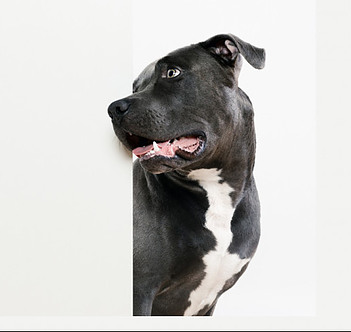
Pit Bull Terriers are incredibly resilient and have a strong will to overcome obstacles. No matter what challenges they may face, Pit Bulls often exhibit a remarkable ability to bounce back. With the right love, care, and training, this breed can overcome negative experiences and transform into well-rounded, happy dogs. Their resilience is a true testament to their beautiful spirit and their capacity to thrive – when given a kind, nurturing and support environment.
Conclusion:
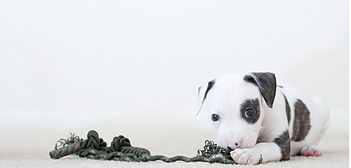
Pit Bull Terriers truly are remarkable dogs. They have an abundance of positive qualities that often go unnoticed. Being loyal, affectionate, intelligent, and resilient, these dogs can make incredible companions and family pets. If we make an effort to understand and appreciate the true nature of Pit Bulls, we can debunk the sad misconceptions and stereotypes surrounding this breed. Given love, proper training (which should happen for all dogs), and responsible ownership, Pit Bull Terriers can bring immeasurable joy, love, and companionship to their owners’ lives. It will be an awesome world to live in, the day that we are able to celebrate the remarkable qualities of these dogs and give them the recognition they deserve.
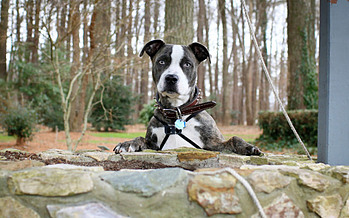
FAQ’s
Are Pit Bull Terriers Good With Cats?
The answer to the question of whether Pit Bull Terriers and cats can live together harmoniously depends on the individual animals. Their personalities, socialization, and training will dictate.
There are some Pit Bull Terriers that can and do coexist peacefully with cats. Then there are others who have a higher prey drive and then it would be ill-advised to expect them to live peacefully together.
We are big cat lovers (in addition to loving dogs, of course) so we ask from the bottom of our hearts, to take enormous care when introducing a Pit Bull Terrier to a cat.
In fact, bringing a qualified and experienced animal behaviourist in to assist is highly recommended.
How Do You Introduce A Pit Bull To A Cat?
There are a few factors to consider if you want to introduce a Pit Bull Terrier to a household with cats:
1. Socialization: Early socialization is crucial for both the Pit Bull Terrier and the cat. When a Pit Bull Terrier is introduced to cats in a positive and controlled manner from a young puppy, the chances of it accepting the cat as part of the family is higher.
2. Temperament: Just like people, Pit Bulls have different personalities and temperaments. It really is an individual thing and plays a significant role. There are Pit Bulls who display a stronger prey drive and would then be more prone to chasing cats and other smaller animals. Then there are Pit Bulls who have a more relaxed and tolerant nature.
3. Training: It is essential to provide ongoing and proper training for any dog, but particularly for a powerful breed with innate protective instincts, like Pit Bull Terriers. Commands such as “leave it” and “stay” can help manage interactions with the cat. This is not guaranteed, however, there are times when a dog with a high prey drive may struggle to overcome its instincts. Rather, err on the side of caution.
4. Cat’s Experience: Another area to give serious consideration to is the cat’s previous experience with dogs. Any cat that has not been around dogs or worse, has been on the receiving end of a negative experience, will probably have a hard time adjusting to a new dog family member. If a cat is inclined to run when it sees a dog, this will likely end up in a chase – and could end very badly. Not worth the risk in our opinion.
5. Supervision: This is extremely important, always supervise interaction between your cat and Pit Bull, particularly in the initial introduction period. Being present will ensure the safety of both pets as you are available to intervene if necessary.
6. Separate Spaces: It is important to provide separate safe spaces for the cat and the dog, especially in the beginning. This allows each animal a non-threatening place to completely relax, which also reduces the “fight or flight instinct” and the chances of negative interactions. Our experience has shown us that this is not a guaranteed solution. Cats are curious and will be inclined to move around the property. We know of cats that have been killed by the family Pit Bull when this happened. The best case scenario is to not keep them together on the same property if there is any sign of risk. Sadly you will need to choose which one to keep and which to rehome.
7. Gradual Introduction: You could introduce the Pit Bull Terrier and the cat gradually without them even seeing each other from a distance. To do this, start with scent swapping by exchanging bedding or toys between the two animals. After that, you could move towards supervised meetings in a controlled environment. To ensure the safety of both pets, you could have them both in crates and position the crates a distance away initially, moving them close to one another as and when they react positively (or not at all) to one another. The lack of reaction can also indicate that they may live in peace with one another.
Remember that every animal is unique, and there are no guarantees of how they will interact.
Some Pit Bull Terriers and cats become the best of friends, while others may never fully get along.
It’s essential to be patient, observant, and prepared to intervene if necessary to ensure the safety and well-being of both the dog and the cat.
Please, make use of the adage “if in doubt, don’t”. Should you have any concerns, we recommend bringing in a professional animal behaviorist or trainer who has the experience and can provide personalized guidance, based on the specific animals involved.
Are Pit Bull Terriers good guard dogs?
Let’s look at the term “Pit Bull Terrier” and where it comes from. It’s actually a broad category that includes several breeds of dog, for example, the American Pit Bull Terrier, American Staffordshire Terrier, and Staffordshire Bull Terrier.
Sadly, these breeds’ are frequently misunderstood due to negative media portrayals. It is essential to understand that individual dogs’ temperament can and does vary greatly.
Pit Bull Terriers can be loyal, intelligent, and protective of their families. These are the characteristics that might make them good candidates as guard dogs. However, we cannot stress enough how important it is to bear in mind that a dog’s behaviour and suitability as a guard dog depends on various factors, including the following:
- their training,
- socialization, and
- innate personality.
Important points to consider (apologies in advance for repeating ourselves, we do this in case you skipped straight to this question):
1. Temperament: Properly trained and socialized Pit Bull terriers can be friendly and affectionate towards people. As they may have a protective instinct, aggression should never be encouraged or tolerated. Please be a responsible owner – someone who is confident, kind, and an encourager of good behaviour.
2. Training: This applies to any breed of dog – if the intended aim is for your Pit Bull to become a guard dog, then specialized training is non-negotiable. When you invest in professional training, you can expect to be taught how to reinforce good behavior and discourage aggression.
3. Socialization: To ensure a stable and well-rounded dog, early and positive socialization with a variety of people, animals, and environments is crucial. We have a Jack Russell (granted, not a Pit Bull but still a Terrier) who doesn’t flinch around horses, cattle, or any other breed of dog no matter their behaviour. This is a direct result of her training and exposure to a wide variety of animals and people from puppyhood.
4. Legal Considerations: We will expand on this a little further down, please be aware that many countries have breed-specific legislation or restrictions on owning certain dog breeds, including Pit Bull Terriers.
5. Liability: When deciding to own a dog with particular guarding instincts, one also takes on the responsibility of owning the potential behaviour of the breed. It is your responsibility to ensure the safety of the public and any visitors who will be in contact with your dog. You will be held liable if your dog causes any harm.
6. Individual Differences: We said this earlier and it’s worth reiterating. Each dog is unique, and, even within a breed, there can be wide variations in temperament.
When considering a guard dog, it’s essential to do your own research and also consult with reputable and professional dog trainers, in addition to breed experts. This will help you find the right match for your needs and lifestyle. In addition, please consider adopting a dog from a shelter or rescue. There are far too many wonderful dogs of various breeds and mixed breeds looking for loving homes.
Are American Pit Bull Terriers dangerous?
This is a complex and controversial question. Firstly, we cannot stress enough how important it is that we all understand that the behavior of any dog, including APBTs, is influenced by a combination of the following:
- genetics (the reason to avoid puppy mills),
- socialization,
- training, and
- environment.
Sweeping generalizations of an entire breed can be “dangerous” plus, it would be unfair and inaccurate.
Please read on to view key points to consider:
1. Breed Stereotypes: APBTs, along with a number of other breeds, have been unfairly stigmatized. This is due to negative media portrayals and misconceptions. It’s essential to avoid making assumptions about an individual dog’s temperament based solely on its breed.
2. Loyalty and Protectiveness: As APBTs are known for being loyal to their families, they can be protective. That said, protectiveness should not be confused with aggression. When given proper training and socialization, this breed can be well-behaved and balanced dogs.
3. Aggression and Behavior: Just like all other dog breeds, APBTs can display aggressive behaviour if they are poorly bred (think puppy mills), mistreated, or subjected to negative experiences. The breed itself is not more aggressive than others. Responsible ownership and breeding, in addition to positive training, can make a significant difference in a dog’s behavior.
4. Individual Variations: Again, just like any breed, each APBT is an individual, which means it has its own personality and temperament. Some may be outgoing and sociable, while others are more reserved. Not unlike people, actually.
5. Responsible Ownership: When owning a dog, especially one with a potentially strong guarding instinct, responsible ownership is a must. Responsible owners ensure proper training, socialization, exercise, and attention to the dog’s needs. Confident, responsible, and kind ownership is vital.
6. Legal Considerations: Some countries and regions have breed-specific legislation (BSL). What this means is that there are laws that restrict or ban the ownership of APBTs and other breeds which are perceived as “dangerous.” Please keep yourself informed and updated of your local area laws and regulations regarding dog ownership.
To wrap this answer up, American Pit Bull Terriers are not inherently dangerous. Be aware though that they require more experienced and responsible ownership due to their strength, loyalty, and potential protectiveness.
Just like any dog, this breed can thrive in a loving and supportive environment where they receive proper training and care.
Should you consider owning an APBT or any other breed, we encourage you to put in the time and effort to learn everything you can about the breed’s characteristics and ensure that it match is a good match for your lifestyle and that you have what it takes to provide the necessary care and training.
Are Pit Bulls Aggressive to Humans?
We’ve seen this question asked a lot. So we decided to address it straight after the paragraph above where we discussed whether American Pit Bulls are dangerous.
If you have come straight to this question, please read the paragraph directly above in addition to what we are sharing here..
Here is what the ASPCA.org (https://www.aspca.org/about-us/aspca-policy-and-position-statements/position-statement-pit-bulls) has to say in response to the question “are Pit Bulls aggressive to humans”
“These dogs have long been popular family pets, noted for their gentleness, affection, and loyalty. And even those pit bulls bred to fight other animals were not prone to aggressiveness toward people.”
That said, please ensure that you follow all the recommendations in the paragraph above. Being the right owner for a Pit Bull, or any dog breed, is crucial too.
What To Do If A Pitbull Attacks?
Encountering any dog attack, no matter the breed is a frightening experience and can be a dangerous situation. Should you find yourself facing a dog attack (this applies to a Pit Bull or any dog breed), it’s essential to take confident, immediate, and decisive action to protect yourself and others. Here’s what to do in the event of a dog attack (regardless of the breed):
1. Stay Calm:
– Hard as it may be, try to remain as calm as possible. If you panic this can escalate the situation which could make the dog more aggressive.
2. Avoid Eye Contact:
– There are a few different strains of thought on this but it is worth noting that some dogs perceive direct eye contact as a threat. For this reason, rather avoid staring directly at the dog and keep your gaze averted – while still being very aware of its movements.
3. Stand Still:
– This may sound counterintuitive but, if the dog is approaching or lunging, do your best to stand still with your arms by your sides.
– Also, avoid making quick movements, because this can trigger a dog’s predatory instincts.
We’ve seen Victoria Stillwell react in this manner when doing videos with clients’ dogs. It is an unnerving situation and challenging to keep cool during an interaction like this with a dog. Number 4, explains why in more detail.
4. Do Not Run:
– A dog’s instinct to chase can be triggered if you run, and remember, dogs are fast runners
– Attempting to flee the situation might escalate the attack. Please, do not run.
5. Use a Barrier:
– Place something between yourself and the dog. Anything you have handy, for example, a bag, backpack, or bicycle.
This will act as a barrier and could discourage the dog from approaching closer.
6. Create Distance:
– Move slowly and calmly, and do your best to back away from the dog. Do not turn your back on it, it’s best to keep the dog in your peripheral vision so you can continue to monitor its movements.
7. Protect Your Body:
– Should the dog lunge at you or attempt to bite, use your arms and hands to protect your face, neck, and chest
8. Use Voice Commands:
– The word “command” is important here – use your most commanding, firm, and loud voice, and tell the dog to “Back off” or “Go home.”
While this may not always work but is worth a try as some dogs may respond to a strong, authoritative command.
9. Call for Help:
– The more people are aware of the situation you are in, the higher the chances of you receiving some help.
If there are people nearby, call for
10. Avoid Provoking the Dog:
– Very tough when being attacked but absolutely vital. Do not use a high-pitched scream, yell, or make loud noises. This will agitate an already agitated dog.
If you are going to speak make sure it’s in a commanding voice with words such as “Back off” or “Go home:
11. Report the Incident:
– Once the attack is over, first seek medical assistance (if needed)
– Then report the attack to your local animal control (SPCA) or the police. This is so that they can investigate and take further action if required.
Dog attack incidents are all unique, and there is no one-size-fits-all management strategy.
The steps shared above are guidelines only and you may need to respond and adapt as things occur.
If at all possible, the best approach is to focus on prevention and avoid a dangerous situation when possible.
The final step of reporting to the appropriate authorities is vital. Your report will assist in appropriate measures to be taken in order t ensure public safety.
Are There Still Countries That Have Banned Pit Bull Terriers?
We have done what we can to put the best foot forward for Pit Bull Terrier. It would be irresponsible of us to not talk about the reality that Pit Bulls have been banned from many countries around the globe.
For that reason, we are sharing the information below with you. Please take note of the countries where Pit Bulls are not permitted. If you are caught importing a Pit Bull, the demise of the dog is not good, it will likely be euthanized. In addition, you could face fines and possibly even imprisonment.
According to World Population Review, 49 countries have partial or complete bans on American Pit Bulls and Pit Bull Terriers. Have a look below for the list of countries and a map covering the year 2023:
List Of Every Country to Have A Pit Bull Ban
Map of Counties That Ban Pit Bulls 2023
Both images above contain links to the website they come from, feel free to click through and read what World Population Review has to say.
Our Final Say
We hope you will agree that we have shared the good, the bad, and the ugly about Pit Bull Terriers.
I (Louise) recently pet-sat an American Bull Terrier (Roxy) and her Jack Russel friend (Toffee).
Roxy is definitely one of the gentlest dogs I have ever had the pleasure of sitting. She was obedient, sweet as pie, and a total softy. Roxy even gave me big smiles. crinkling up her face in the cutest way! She wasn’t always smiley, in fact, she reminded me a lot of Eeyore, she had a bit of a “hang” dog depressed look about her. Truly one of the sweetest pooches I have ever cared for. Of course, Toffee must be discussed here too, even though she is not a Pit Bull, it just wouldn’t be fair to not speak about her – she is the tiniest Jack Russel ever with the biggest personality. A complete live wire – typical for a JRT.
Hope you enjoyed reading this article. Would like to share your experience of Pit Bull Terriers with us? Please feel free to leave a comment for us below.
Many thanks
Louise and Beth



Thanks for your post describing the breed and its positive traits. Personally, I don’t like Pitbulls. I’m afraid of them and I don’t trust them at all. I’ve heard too many horror stories and I know personally of a tragedy that took place. However, you have described many great qualities this dog has. I love your instructions on what to do if you’re attacked by a pitbull.
Hi Shalisha
I understand why you would say that. I hope that you will one day meet a delightful Pit Bull – they really can be amazing pets. Sadly, it’s humans who have made their lives so challenging. We have a lot to answer for.
Thank you for your visit and for sharing, really appreciated.
Louise
My neighbor had a pit bull once. It was a pretty aggressive dog, though. Meaning, it had to be put down because it attacked several people in the neighborhood. It actually mauled some kids face!
I have known a couple pit bulls in my 38 years and most of them were pretty calm, though. Honestly, I think the one that attacked several people was neglected all the time. They would leave the dog out when it was 100+ degrees and it barked all the time. Probably because it was neglected, hot, and underfed, too.
Hi Garen
That breaks my heart – for the poor kid and the dog.
Like you say, when they are well cared for (and this goes for any breed really) they can be amazing family members!
Anyone who treats a dog the way you described, needs to be reported to authorities. That makes my blood boil!
Thank you for your visit and share.
Louise
Hello Louise
Thank you for this amazing article about Pit Bull Terriers. I always thought Pit Bull Terriers were aggressive dogs as I have seen some where I live that were aggressive and heard many stories of these type of dogs being vicious.
I enjoyed learning about them and it’s great to know they are not that bad and are actually loving and loyal if they are looked after and trained properly. It’s also nice that they like walks and enjoy a game of catch.
If I ever get a dog a Pit Bull Terrier wouldn’t be my dog of choice because I like other breeds like Cattle Dogs and Labradors better but I still enjoyed learning about them. I have bookmarked your article and will be referring back to it in the future. Thank you again for this amazing article.
Regards
Timothy
Hi Timothy
Thank you so much for your visit and contribution – really appreciated.
Funny, the Cattle Dogs terrify me, I met two on a farm in South Africa, they were seriously not friendly at all! They, like Pit Bulls, are obviously not all the same, haha!
Thank you so much again.
Louise